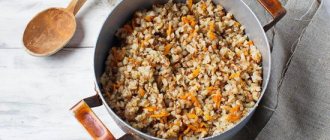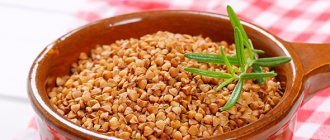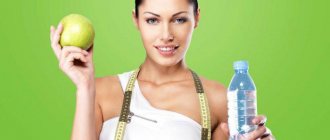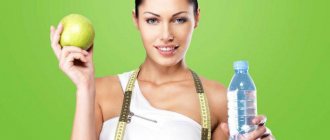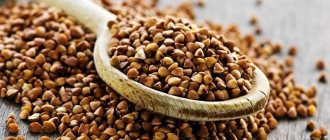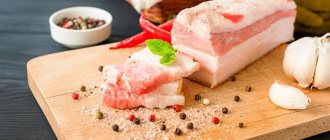Potatoes are one of the main products in our diet. Since Peter I brought “Dutch tubers” to the capital, potatoes have become a familiar and everyday dish. It is consumed both raw, for example, to treat diseases, and fried, stewed, and boiled.
Most often in cooking, it is boiled food that can be safely called a dietary product. And all because the calorie content of boiled potatoes is comparable to the nutritional value of half a banana.
What to watch out for
Potatoes come with yellow and white flesh and have more than 10 varieties.
The yellow root vegetable is considered the most useful; it contains a lot of beta-carotene, which promotes good vision, maintaining beautiful skin and long-lasting youth. It should be remembered that the caloric content and starch content of potatoes are quite high, so they should be consumed in limited quantities by people with obesity or diabetes. Sometimes when storing vegetables in open light, green areas appear on the tubers. This means that a toxic substance is formed there - solanine. Such tubers cannot be eaten. Ideally, potatoes should be dry and have smooth skin without plaques or cuts.
Useful and harmful properties
The positive effect on the body is due to the substances contained in the earthen apple:
- thanks to potassium, the heart rhythm and the strength of skeletal contractions are normalized, muscle convulsive readiness is reduced;
- potato diets are prescribed for diseases of the circulatory system and kidneys;
- general (taken orally) and local swelling disappear: a lotion with gruel from raw root vegetables removes bags under the eyes;
- raw potato juice, thanks to starch, helps cure gastritis with high acidity, stomach ulcers, flatulence;
- potato starch is used to make powders and tablets;
- for colds, it is used in the form of inhalations over the steam of boiled root vegetables and in the form of a compress from potato cakes for coughs;
- treats purulent wounds and boils, eczema, sunburn; improves the condition of the skin, making it velvety.
The negative impact of potatoes is primarily due to solanine, which is contained in all parts.
There is the least amount of it in tubers, but under the influence of light and ultraviolet rays the amount of the toxic substance increases significantly and green spots on the surface and core signal this.
When eating, such areas should be removed, and if the tuber is diffusely stained and has sprouted eyes, avoid eating it altogether. This is especially true for a pregnant woman: even if she herself does not suffer, there is a high risk of developing fetal deformities.
It is not recommended to eat root vegetables if you have diabetes, gastritis with low acidity, or acute pancreatitis.
Benefits of root vegetables
At a boiling point of water of 100°, minerals and carotene are preserved, which begins to decompose only at 170°. The intercellular hard membranes of the root vegetable become soft during cooking, releasing more antioxidants and valuable micronutrients that are easily digested by the body.
Provitamin A enhances its benefits when combined with fats. Therefore, when eating boiled chopped carrots seasoned with oil, a person receives about 40% of carotenoids. Only 3% of these microelements are absorbed from a whole raw fruit. For dietary dishes, the vegetable must be boiled whole: this preserves falcarinol, a compound that reduces the likelihood of neoplasms of internal organs.
When losing weight
Salads, soups, stews with boiled carrots give you a feeling of fullness for a long time. At the same time, the rich mineral and vitamin composition makes the root vegetable indispensable in dietary nutrition. Low calorie content, high nutritional value - these are the properties that distinguish the orange vegetable from other products.
To build a diet taking into account the glycemic index (GI), raw fruit is preferable; its indicator is several times lower than boiled fruit. Accordingly, when losing weight, boiled carrots are included in the diet in moderation, combined with ingredients that have a low and medium glycemic index.
| Products that can be combined with boiled carrots in one meal | GI level |
| Fresh green peas | 40 |
| Apple raw | 30 |
| Dried apricots without preservatives | 33 |
| Figs | 34 |
| Buckwheat groats | 40 |
| Pearl barley | 19 |
| Pasta made from durum wheat | 40 |
| Orange | 36 |
| Grapefruit | 20 |
| Walnuts | 16 |
| Apricot | 18 |
| Sunflower seeds | 10 |
| Broccoli | 11 |
| Onion | 10 |
| Eggplant | 11 |
| Tomatoes | 10 |
| Fresh cabbage | 10 |
During pregnancy and pregnancy
Boiled carrots, whose calorie content is no more than 25 kcal per 100 g, are valued as a nutritious product for the female body during pregnancy. Vitamins A, B, alpha-, beta-carotene, iron, rich mineral composition - all this allows us to recommend the root vegetable for the daily diet of a pregnant woman. Vitamins K, C, E contribute to the growth of immunity and resistance to infections.
Daily consumption of boiled vegetables reduces the manifestation of toxicosis, fiber helps normalize digestion. It is recommended to eat no more than 2 medium carrots per day, boiling them whole in unsalted water
Due to its low calorie content, vegetables are included in first and second courses, especially in the third trimester, when it is important not to gain excess body weight
When breastfeeding, introducing a new product into the diet increases the risk of allergies in the baby. To exclude this, a quarter of the vegetable is included in the morning or lunch meal, starting from about 10-15 days of lactation. Then, if the child does not have an allergic reaction, add it to other dishes, consuming no more than 1-2 pieces per day. Boiled root vegetables on a nursing mother's menu usually do not cause rashes or digestive problems in the baby.
For diseases
Whole boiled vegetables are especially recommended for inclusion in the daily diet of patients with dementia and Alzheimer's disease. Carrot antioxidants improve brain activity, heal the body at the cellular level, and increase the level of cell resistance to free radicals.
Grated boiled root vegetables will have a rehabilitative effect on the visual organs with:
- myopia;
- farsightedness;
- after ophthalmological interventions.
Alpha and beta carotene will improve the quality of daytime and night vision, blood supply to the retina and the entire eye apparatus. Eat carrots together with fat-containing foods or oil. Persons with vascular diseases are recommended to eat 200 g of boiled carrots daily for a 21-day course. The micronutrient composition of the vegetable reduces cholesterol levels in the blood and normalizes the outflow of bile acids.
In case of diabetes, the consumption of boiled root vegetables should be limited: a high glycemic index provokes a rapid rise in blood glucose levels. There is no point in excluding carrots completely - garden biennials contain a huge amount of useful microelements, a minimal portion will be beneficial. The diet is calculated by adding no more than 150-180 g of boiled vegetables per day to dishes.
Calorie content of boiled potatoes
Boiled potatoes:
- without dressing – 80 kcal;
- with butter – 127 kcal;
- with vegetable oil and garlic – 124.7 kcal;
- with cracklings (pieces of melted lard) – 171.3 kcal.
Potatoes boiled in milk – 97.2 kcal.
Boiled potatoes with mushrooms – 102 kcal.
Mashed potatoes:
- with milk and butter – 133 kcal;
- with vegetable oil – 121 kcal;
- with vegetable oil and raw egg – 128 kcal.
Dumplings with potatoes – 110 kcal.
Fried potato:
- with vegetable oil – 203.8 kcal;
- with pork lard – 212 kcal
- on melted fat (lard) – 224.5 kcal.
French fries – 350 kcal.
For baking in their skins, it is better to choose medium-sized potatoes, otherwise there is a chance that the tuber will not bake in the middle, but will already burn at the edges. In order to save time, you should give preference to small fruits - they cook much faster.
Thanks to the peel, potatoes cooked in their jackets retain mineral salts and organic acids. It is rich in potassium and magnesium, ideal for diet.
Three hundred grams of boiled product contains the daily requirement of carbohydrates, potassium and phosphorus. But if you store it for more than three months, the properties of the nutrients in it decrease. The content of vitamin C especially decreases - only a third of the original amount remains.
Potatoes must be supplemented with protein-rich foods. This vegetable goes perfectly with meat or mushrooms, and the protein content in such dishes increases.
If you fry potatoes with mushrooms, the calorie content of the dish will not exceed 120 kilocalories per 100 g. It should be remembered: adding a large amount of oil significantly increases the calorie content of the dish.
Potatoes with mushrooms go well with sour cream. When baking such a dish with sour cream 30% fat, only 100 kilocalories per 100 g. When using sour cream with less fat, the total calorie content of the dish is reduced. This is a very tasty and healthy way to cook potatoes.
Meat and potatoes in the oven is a great recipe for the holiday table. And in one hundred grams there are only 100 kilocalories. Using fatty meat increases the calorie content of such pots. For those who want to lose weight or just keep in shape, it is better to give preference to lean beef or pork.
Due to their low calorie content, potatoes are dietary. There are a huge number of low-calorie recipes with this vegetable: casseroles, pots, stews, baked or simply boiled potatoes. Potatoes combined with meat are a source of energy for the whole day.
But you should not overuse dishes made from this vegetable, because they are rich in carbohydrates. People who care about their figure should give preference to protein products for dinner - meat, fish, eggs. And potatoes can act as a side dish at lunchtime. The glycemic index of this product is high, so people with diabetes and pancreatic disease need to be extremely careful.
Potatoes are a perennial root crop of the nightshade family; all above-ground parts of the plant, especially the berries, are poisonous due to the high content of the toxic glycoside solanine.
The combination of unpretentiousness in cultivation and the satiety of dishes prepared from it made potatoes accessible to all segments of the population. Lost harvests due to late blight caused widespread famine in Ireland in the 19th century.
At the end of the 17th century, Peter the Great sent root crops from Holland to Russia for planting and cultivation in Russian provinces. The idea of growing earthen apples did not catch on right away; many, out of ignorance, poisoned themselves with the fruits of the plant and dubbed them devilish, and even rebelled against them.
Jacket potatoes: how to cook potatoes deliciously without them boiling overcooked
I remember being a student. Guitar, friendly friends and a fire. They cooked shish kebab and, of course, jacket potatoes on it. Hot. With a crispy crust. You break it, and steam comes out of the tuber. Sprinkle with salt and fly away into pleasure. The taste of the dish was very real: delicate, with potato spice and relish.
You can and should prepare a delicacy not only as in your distant youth, but also in your own kitchen. For this, use a saucepan, an oven, and also foil with the most delicate cheese, a slow cooker, and even a microwave. It will turn out no worse than at the stake. Just as tasty, aromatic and very satisfying.
Let your whole family enjoy the tubers in their skins, tasting them with milk, salt and butter. This dish is appropriate when you have little time to cook and don’t want to bother with it at all. So let's begin our journey to a tasty and undressed vegetable.
Chemical composition and characteristics of potatoes
Potato (Solanum tuberosum) is a perennial plant of the nightshade family (Solanaceae). It is cultivated as an annual to produce edible tubers.
The potato bush reaches a height of 0.6-1 m. The number of stems on one bush is 4-8. The caliber of seed material directly affects the number of stems.
The stems are ribbed and thick. The underground part forms stolons - lateral processes on which tubers appear.
Potato tuber cells are filled with starch. The tuber is covered with a thin cork tissue. On its surface there are eyes ranging from 3 to 15 pieces. Sprouts appear from them. The main eye germinates first, the rest are in a state of suspended animation. If the main kidney is damaged, the “sleepers” wake up. Weaker seedlings emerge from them.
The shape of the tubers can be round, oval, or oblong. Potato skins are pink, yellow, red, purple. The pulp is cream, white, yellow, purple.
What's in potatoes? Tubers are rich in vitamins and minerals and have high nutritional value. The table shows the chemical composition of raw potatoes (per 100 g).
| Name | Norm | |
| Beta carotene | 0.001 mg | 5 mg |
| Vitamin B1 | 0.081 mg | 1.5 mg |
| Vitamin B2 | 0.032 mg | 1.8 mg |
| Vitamin B4 | 12.1 mg | 500 mg |
| Vitamin B5 | 0.295 mg | 5 mg |
| Vitamin B6 | 0.298 mg | 2 mg |
| Vitamin B9 | 15 mcg | 400 mcg |
| Vitamin C | 19.7 mg | 90 mg |
| Vitamin E | 0.01 mg | 15 mg |
| Vitamin K | 2 mcg | 120 mcg |
| Vitamin PP | 1.061 mg | 20 mg |
| Potassium | 425 mg | 2500 mg |
| Calcium | 12 mg | 1000 mg |
| Magnesium | 23 mg | 400 mg |
| Sodium | 6 mg | 1300 mg |
| Phosphorus | 57 mg | 800 mg |
| Iron | 0.81 mg | 18 mg |
| Manganese | 0.153 mg | 2 mg |
| Copper | 110 mcg | 1000 mcg |
| Selenium | 0.4 mcg | 55 mcg |
| Zinc | 0.3 mg | 12 mg |
How much sugar is in the product
100 g of raw tubers contain the following carbohydrates:
- starch and dextrins - 15 g;
- mono- and disaccharides (sugars) - 1.3 g;
- glucose (dextrose) - 0.6 g;
- sucrose - 0.6 g;
- fructose - 0.1 g.
What does the composition depend on?
The chemical composition of potatoes and nutritional value depend on:
- varietal characteristics (Chervona Ruta potatoes contain 26% starch, Sifra tubers - from 11 to 15%);
- fertilizers applied to the soil;
- the type of soil on which it was grown;
- digging period (young tubers have less starch and more vitamins);
- shelf life (closer to spring, the tubers dry out, the amount of vitamin C in them decreases and toxic substances accumulate).
Contraindications to eating boiled potatoes
Potatoes do not always have a beneficial effect on the body.
Contraindications to taking a boiled product may be its high calorie content, as well as the person’s health status:
- It is unacceptable to use vegetables with greenish skin. Chlorovyl tubers give this color. This substance will not cause any harm, but the hemolytic poison corned beef (a compound of glucose and sonanidine) contained in the tubers can cause severe poisoning, including death. A similar result can come from using sprouted tubers with so-called eyes. Such vegetables pose a particular danger to pregnant women - they may have a teratogenic (causing malformations) effect on the fetus;
- Fruits grown in soil with nitrates will be harmful to health. The content of nitric acid salts in the product exceeding the norm threatens respiratory failure, food poisoning, and the risk of malignant neoplasms;
- Eating potatoes is contraindicated for people with known metabolic disorders and diabetes. This recommendation is due to the high content of easily digestible carbohydrate elements;
- The inclusion of boiled tubers in the diet is excluded if there is an individual intolerance to the product. Ignoring such an installation can provoke allergic reactions in the form of itching, skin rashes, Quincke's edema;
- It is undesirable to consume vegetables for patients suffering from obesity, acute urolithiasis, enterocolitis, eneritis, and flatulence.
The benefits of potatoes for the human body
In the context of a healthy diet, potatoes with skins can provide health benefits.
Heart Health
Hypertension, a condition characterized by abnormally high blood pressure, is a major risk factor for cardiovascular disease.
Potatoes contain a number of minerals and plant compounds that may help lower blood pressure. The high potassium content in this vegetable deserves special attention.
Several observational studies and randomized controlled trials have associated high potassium intake with a reduced risk of hypertension and cardiovascular disease (17, 23, 24).
Other substances in potatoes that may help lower blood pressure include chlorogenic acid and cucoamines (25, 26).
Body weight control
The benefits of potatoes for humans are also due to the fact that this product helps control body weight. Satiety is the feeling of a full stomach and fullness that occurs after eating. Satisfying foods that produce significant satiety may promote weight control by prolonging feelings of fullness after eating and reducing food and energy intake (27).
Compared to other carbohydrate-rich foods, potatoes seem to be a particularly filling food. One study that compared the satiety index of 40 common foods found that boiled potatoes were the most filling (28).
Another small study of 11 men found that eating boiled potatoes as a side dish with pork steak resulted in lower calorie intake at the meal compared to pasta or white rice (29).
It is unclear which components of potatoes contribute to their satiating effect. However, research suggests that a potato protein known as proteinase inhibitor 2 (PI2) may suppress appetite (30, 31).
Although PI2 may suppress appetite when taken in its pure form, it is unclear whether trace amounts present in potatoes have any effect on appetite.
Daily consumption rate
Potatoes are a high-calorie product, especially when fried or with additives such as butter, milk or side dishes. Therefore, nutritionists advise consuming up to 300 grams of product per day no more than 4 times a week. By following this regimen of potato consumption, you will satisfy the body's need for nutrients contained in potatoes, and will not gain weight due to excess calories.
Jacket potatoes, boiled, skins with salt
rich in vitamins and minerals such as: dietary fiber - 16.5%, vitamin B6 - 12%, potassium - 16.3%, sodium - 19.2%, iron - 33.7%, manganese - 66.9%, copper - 87.8%
- Vitamin B6
is involved in maintaining the immune response, processes of inhibition and excitation in the central nervous system, in the transformation of amino acids, the metabolism of tryptophan, lipids and nucleic acids, promotes the normal formation of red blood cells, and maintaining normal levels of homocysteine in the blood. Insufficient intake of vitamin B6 is accompanied by decreased appetite, impaired skin condition, and the development of homocysteinemia and anemia. - Potassium
is the main intracellular ion that takes part in the regulation of water, acid and electrolyte balance, and is involved in the processes of conducting nerve impulses and regulating blood pressure. - Sodium
is the main extracellular ion that takes part in the transport of water, blood glucose, generation and transmission of electrical nerve signals, and muscle contraction. Sodium deficiency is expressed by symptoms such as: general weakness, apathy, headaches, hypotension, muscle twitching. - Iron
is part of proteins with various functions, including enzymes. Participates in the transport of electrons and oxygen, ensures the occurrence of redox reactions and activation of peroxidation. Insufficient consumption leads to hypochromic anemia, myoglobin deficiency atony of skeletal muscles, increased fatigue, myocardiopathy, and atrophic gastritis. - Manganese
is involved in the formation of bone and connective tissue, and is part of enzymes involved in the metabolism of amino acids, carbohydrates, and catecholamines; necessary for the synthesis of cholesterol and nucleotides. Insufficient consumption is accompanied by slower growth, disturbances in the reproductive system, increased fragility of bone tissue, and disturbances in carbohydrate and lipid metabolism. - Copper
is part of enzymes that have redox activity and are involved in the metabolism of iron, stimulates the absorption of proteins and carbohydrates. Participates in the processes of providing oxygen to the tissues of the human body. Deficiency is manifested by disturbances in the formation of the cardiovascular system and skeleton, and the development of connective tissue dysplasia.
morehide
You can see a complete guide to the healthiest foods in the “My Healthy Diet” app.
Potatoes: composition
Potatoes - contain a significant amount of vitamin C, as well as vitamins B, PP and minerals: iron, phosphorus, potassium, magnesium, manganese, zinc, fluorine, copper.
About 70% of all minerals in potatoes come from potassium salts, and this is extremely important, since it is potassium that helps remove water and table salt from the body, thus regulating metabolic processes. The tubers of this vegetable contain: carbohydrates - 20%, proteins - 2%, fats - 0.15%, organic acids and other compounds
Tubers contain numerous vitamins. In 100 g, for example, – 20 mg. vitamin C
The tubers of this vegetable contain: carbohydrates - 20%, proteins - 2%, fats - 0.15%, organic acids and other compounds. Tubers contain numerous vitamins. In 100 g, for example, – 20 mg. vitamin C.
The daily need for it is satisfied with only 300 grams. “second bread”
This is very important in winter and early spring, when there is a shortage of fresh vegetables and fruits. Potato digestibility is good
Potatoes are highly nutritious due to carbohydrates in the form of starch, which are formed during photosynthesis. Gradually breaking down in the intestines, starch turns into glucose, which is absorbed into the blood and distributed throughout the body.
In cells, glucose undergoes oxidation, or, as they say, “combustion,” which releases the energy necessary for the functioning of the human body.
Potato proteins are the most complete of all known plant proteins, as they contain 14 of the 20 amino acids necessary for the body and are close in amino acid composition to chicken egg white.
What are the benefits of this common vegetable?
Boiled sausage, doctor's: calorie content per 100 g, proteins, fats, carbohydrates
Potatoes contain large amounts of starch, mineral salts, iodine, sulfur, iron, potassium and other nutrients. Proteins in potatoes are very useful. They contain amino acids useful for the body such as methionine, threonine, valine, phenylalanine, tryptophan. It is these substances that the human body cannot synthesize.
Vitamins are necessary for people at any age. Their deficiency is especially noticeable in the autumn and spring periods. If you do not have the opportunity to purchase products containing a huge amount of them, then potatoes will come to the rescue.
The benefits and harms of potatoes
Raw potatoes are not only an affordable product from which you can make many dishes for lunch and dinner. Why is root vegetable so important for our health? Among the unique beneficial properties of fresh potatoes it is worth noting:
- relieving itching;
- elimination of inflammation;
- reduction of edema;
- wound healing;
- normalization of blood pressure;
- increased performance;
- relief from anxiety, stress, panic attacks.
The vegetable also perfectly treats ulcers, migraines, female pathologies, burns, headaches, hypertension, and eczema. The product effectively copes with stomach ulcers, nausea, problems with stool, and heartburn. It can be used in the diet of people with vascular and cardiac diseases.
ABC RECOMMENDS
What is the calorie content of carrots in fresh, fried, boiled, stewed, baked form?
This affordable and simple food has proven itself in the treatment of arthritis and hemorrhoids. The root vegetable helps with muscle cramps and kidney disease. According to many doctors, raw potatoes (juice) are an excellent prevention of cancer.
You can use the product in the treatment of boils, ulcers, and acne. It helps with joint diseases. But the root vegetable is also an excellent remedy for facial skin care. The product treats rashes and acne. Eliminates rashes, promotes cell regeneration. Evens out the complexion, making it more fresh and rested, eliminates dryness, removes fine wrinkles. Makes skin smoother, more even, elastic, and youthful.
Photo source: shutterstock.com
But, like any other food, potatoes have not only positive sides. What are the contraindications for its use? If you uncontrollably include raw potatoes in your diet, this will lead to the accumulation of alkaloids and provoke:
- nausea;
- heart rhythm failure;
- disturbances in the gastrointestinal tract;
- migraine;
- convulsions;
- vomiting
It is also recommended to refrain from consuming the product for people with colitis, gastritis, enteritis, severe diabetes, allergies, urolithiasis, and acute pathologies in the development of the gastrointestinal tract. You should also avoid including vegetables in your diet if you have an individual intolerance to the product, intestinal gas, or excess weight.
Do you want to lose excess weight?
A slim figure is the dream of many women and men. I want to be at a comfortable weight without exhausting myself with strict diets and heavy exercises.
In addition, excess weight can lead to health problems! Heart disease, shortness of breath, diabetes, arthritis and significantly reduced life expectancy!
In such cases, our readers recommend using the latest remedy - Talia instant effervescent tablets.
It has the following properties:
- Speeds up metabolism
- Burns fat deposits
- Reduces weight
- Lose weight even with minimal physical activity
- Helps reduce weight in cardiovascular diseases
Mashed potatoes and potatoes during the diet
One of the dishes with potatoes during the diet is making mashed potatoes. This type of product is digested much faster by the stomach and is not deposited as waste on the walls of the digestive organs.
To prepare such a puree, it is recommended to boil peeled potatoes in water without adding salt and crush them into puree. During the preparation of diet mashed potatoes, oil and other spices are not added.
Stories from our readers!
“I don’t have a lot of excess weight, only about 5 kilograms. But these kilograms are located in very unpleasant places that cannot be corrected with exercise. Conventional diets also did not produce results - completely different parts of the body lost weight!
A friend advised me to speed up my metabolism and ordered these sweets. I was very pleased with the natural composition, pleasant taste and ease of use! Combined with a light diet and plenty of fluids. I recommend!"
Potato diets
To prepare a healthy boiled vegetable, you need to use the following useful tips:
- To preserve all the beneficial properties of potatoes, it is necessary to keep the tubers in a dark place.
- To prevent potatoes from darkening after peeling, it is recommended to store them in cold water.
- Vegetables that have sprouted must be cooked only without the peel.
- In order to eliminate the unpleasant taste of frozen potatoes, you need to add a little vinegar and salt to the cooking water.
- In order for the potatoes to be completely cooked, you need to cook the dish over moderate heat. Intense boiling of the liquid will cause the root vegetable to crack, and the inside of the product will be raw.
- Before starting the procedure for boiling potatoes with skins, you need to add salt to the water.
- In order to quickly cook potatoes, you need to add a little butter to boiling water.
- In order to get a tasty puree, it is recommended to steam the potatoes and dry them to remove excess moisture before chopping.
Chemical composition of boiled potatoes. Chemical composition, microelements and characteristics of potatoes
Potato is a herbaceous plant of the Solanaceae family. Its tubers are an important food product, consumed on all continents in millions of tons per year.
Attention! Green fruits are inedible because they contain the alkaloid solanine. This organic substance protects the plant from damage by bacteria and some types of insects, but its high doses are toxic to the human body
Removing the peel to a depth of more than 1 cm and long-term heat treatment keep the fruits suitable for consumption.
There are over 5 thousand varieties of potatoes, characterized by resistance to diseases and pests, short ripening periods, and high yields. All varieties are conditionally divided into four groups: table, fodder, technical and universal. The most popular table varieties have oval or round tubers with eyes, tender pulp and a starch content of no more than 18%.
The chemical composition and nutritional properties of tubers depend on the variety, climatic and weather conditions, agricultural technology, soil type, storage time and conditions. With proper heat treatment, the beneficial substances of potatoes are practically not lost.
On average, boiled potatoes without peel and salt contain:
- water - 77 g;
- proteins - 1.7 g;
- fats - 0.1 g;
- carbohydrates - 18.2 g;
- dietary fiber - 1.8 g;
- ash - 0.72 g;
- starch - 14.2 g.
The biological value of potatoes as a food product is determined by vitamins. The tubers contain carotene (provitamin A), B vitamins (thiamine, riboflavin, choline, pantothenic acid, pyridoxine, folate), ascorbic and nicotinic acids, vitamin E and K, and betaine.
The acidity of potato juice depends on the content of organic acids. The tubers are richest in citric acid, in smaller amounts - oxalic, lactic, malic, tartaric, isocitric, and chlorogenic. The acidity level for potatoes is set at 5.6-6.2. Fats make up an average of 0.15% of wet weight and are represented by palmitic, linoleic, and linolenic acids.
Boiled potatoes are a valuable source of minerals. Tubers contain calcium, potassium, magnesium, sodium, phosphorus, as well as trace elements - copper, manganese, iron, selenium, zinc. The mineral composition of the raw product is more diverse and also includes silicon, sulfur, chlorine, aluminum, boron, vanadium, iodine, cobalt, lithium, molybdenum, nickel, rubidium, strontium, chromium, zirconium.
How much sugar is in boiled potatoes
Sugars in potatoes are represented by digestible carbohydrates (per 100 g of product): sucrose - 0.18 g, fructose - 0.28 g, glucose - 0.33 g. Mature tubers contain little sugar, from 0.5% to 1. 5%, but it can accumulate up to 5-6% or disappear completely.
The decisive factor is air temperature, duration and storage conditions. So at a temperature of +10°C, 3.58 mg of sugar is formed in 100 g of potatoes and the same amount is consumed. At lower temperatures (0-10⁰C), sugar accumulates in the tubers to a certain level, after which it remains unchanged. The most favorable storage temperature will be above +10⁰С, when more sugar is consumed than accumulated.
Sugar levels also depend on the potato variety. On average, 100 g of boiled potatoes contains 0.8 g of sugar, respectively, 1 kg - 8 g.
Reference. A higher concentration of sugar in tubers adversely affects its taste and beneficial qualities: a sweet taste appears, potatoes darken when cooked.
Calorie content of mashed potatoes
Cottage cheese casserole: calories per 100 g, proteins, fats, carbohydrates
The calorie content of mashed potatoes can be low if milk with 0% fat or water is added in the process. One 100-gram serving contains about 85 kcal. If you choose fattier milk, the indicator can increase to 35 units. Any oil significantly increases the nutritional value of a dish.
The puree will have a calorie content of 130 kcal if you add just one teaspoon of butter (the numbers vary depending on its fat content).
You can reduce the energy value if you cook your favorite dish in dishes coated with ceramic, marble or Teflon.
In addition, it is important to ensure that no more than 10 g of fat-containing product is consumed per 500 g of root vegetables. Read about the nutritional composition (BJU) of potatoes in our article
Chemical composition, microelements and characteristics of jacket potatoes
Potatoes contain essential amino acids: 0.293 g per 100 g of boiled jacket potatoes and 0.324 g per baked product.
Complex of essential amino acids:
- Leucine. Boiled - 0.112 g, baked - 0.119 g. Promotes muscle building and fat burning. Participates in the processes of metabolism of fats and carbohydrates. Strengthens the immune system.
- Isoleucine. Boiled - 0.076 g, baked - 0.08 g. The amino acid serves as the basis for protein and is involved in the process of energy exchange. Promotes rapid recovery of the body after physical activity.
- Valin. Boiled - 0.105 g, baked - 0.125 g. Participates in the formation and maintenance of the immune system of a growing organism. Helps brain function during increased mental stress. Increases the body's endurance and stability in stressful situations.
In addition, tubers contain vitamins A, group B, fiber and organic acids.
100 g of young potatoes contain 20 ml of ascorbic acid. During long-term storage, the amount of vitamin C decreases and by spring it becomes three times less.
Nutritionists believe that potatoes cooked in their skins are healthier. The skin contains microelements valuable for the body.
| Mineral composition of jacket potatoes / share of the daily value per 100 g | ||
| Element | Boiled | Baked |
| Calcium | 5 mg/0.5% | 15 mg / 1.5% |
| Iron | 0.3 mg / 3.1% | 1.1 mg / 10.8% |
| Magnesium | 22 mg / 5.5% | 28 mg / 7% |
| Phosphorus | 44 mg / 6.3% | 70 mg / 10% |
| Potassium | 379 mg / 8.1% | 535 mg / 11.4% |
| Sodium | 4 mg / 0.3% | 10 mg / 0.8% |
| Zinc | 0.3 mg / 2.7% | 0.4 mg / 3.3% |
| Copper | 0.2 mg / 20.9% | 0.1 mg / 13.1% |
| Manganese | 0.1 mg / 6% | 0.2 mg / 9.5% |
| Selenium | 0.3 mcg / 0.5% | 0.4 mcg / 0.7% |
| Fluorine | 49.4 mcg / 1.2% | — |
How much sugar is in potatoes
Presence of sugars in potatoes (per 100 g):
- sucrose - 0.18 g;
- fructose - 0.28 g;
- glucose - 0.33 g.
Ripe tubers have a low sugar content - from 0.5% to 1.5%, it varies depending on storage conditions.
What does the composition depend on?
There are more than 5 thousand varieties of potatoes in the world. They all differ in composition.
In addition to the varietal, the composition is influenced by:
- storage conditions and duration;
- the climatic conditions in which it was grown;
- fertilizers
Use in folk medicine and cosmetology
Potatoes have found application not only in cooking.
Flowers and tubers are used in folk medicine and cosmetology. They are used as part of medicinal masks, lotions, decoctions, compresses, suppositories, and lotions.
In folk medicine
Remedy for treating tonsillitis:
- boil dried potato flowers in the following proportion: 1 tbsp. l. raw materials for 1 glass of water;
- cool;
- Gargle with the decoction 3 times a day for 10 days.
Burn remedy:
- raw potatoes are grated on a coarse grater;
- wrapped in 2-3 layers of gauze;
- a compress is applied to the burn site.
Inhalation for colds:
- boil potatoes in their jackets;
- breathe steam for 5-10 minutes before going to bed.
In cosmetology
Potato mask “Freshness”:
- boiled hot potatoes are crushed, a raw egg and 2 tbsp are added. l. milk;
- mix the ingredients and apply the cooled mass to the face;
- keep the mask for 15-20 minutes;
- wash off with warm water;
- do a contrast rinse with cold and warm water.
The face becomes fresh and takes on a radiant appearance.
Hand mask “French”:
- boil two tubers and make a puree;
- add 10-12 drops of glycerin, 5-6 drops of lemon juice;
- Apply the mixture to your hands and hold for 10 minutes.
Recommended for chapped and red hands from frost.
Lotion for problem skin “Stop acne”:
- grate one potato and squeeze out the juice;
- prepare chamomile decoction - 2 tbsp. l. chamomile flowers are poured with 1 cup of boiling water and left for 30 minutes;
- mix potato juice and strained cold broth;
- wipe the face with the prepared lotion using a cotton swab.
Vitamins in Boiled Potatoes
Boiled potatoes contain the following vitamins: Mono- and disaccharides, SFA - Saturated fatty acids, Ash, Water, Dietary fiber, Sodium, Potassium, Phosphorus, Magnesium, Calcium, Copper, Manganese, Selenium, Zinc, Iron.
| Vitamin B1 (thiamine), mg | 0,098 |
| Vitamin B2 (riboflavin), mg | 0,019 |
| Vitamin B6 (pyridoxine), mg | 0,269 |
| Vitamin B9 (folic), mcg | 9 |
| Vitamin C, mg | 7,4 |
| Vitamin E (TE), mg | 0,01 |
| Vitamin K (phylloquinone), mcg | 2,1 |
| Vitamin PP (Niacin equivalent), mg | 1,312 |
| Choline, mg | 13,2 |
| Beta-carotene, mg | 0,002 |
| Vitamin B5 (pantothenic), mg | 0,509 |
Calorie content and chemical composition of other products
| Product | Kcal | Proteins, g | Fats, g | Angle, g | |
| White Potatoes (with Peel) | 70 | 1,68 | 0,1 | 15,71 | |
| White Potatoes (with Peel, Baked) | 94 | 2,1 | 0,15 | 21,08 | |
| Mashed potatoes | 100 | 1,8 | 3,54 | 15,72 | |
| Fried potatoes | 149 | 2,32 | 7 | 20,06 | |
| Potatoes (without peel, with salt, boiled) | 87 | 1,87 | 0,1 | 20,13 | |
| Mashed Potatoes (from Dry Powder) | 105 | 2,02 | 5,56 | 12,22 | |
| Mashed Potatoes (with Whole Milk) | 83 | 1,92 | 0,57 | 17,53 | |
| Mashed Potatoes (with Whole Milk and Butter) | 113 | 1,87 | 4,22 | 16,77 | |
| Baked Potato (Eat with Peel) | 109 | 2,43 | 2,2 | 20,53 | |
| Baked Potato (Eat without Peel) | 92 | 1,95 | 0,1 | 21,39 | |
| Potato Pancakes (from Frozen) | 217 | 3,14 | 11,43 | 27,93 | |
| Red Potatoes (with Peel) | 72 | 1,89 | 0,14 | 15,9 | |
| Red Potatoes (with Peel, Baked) | 89 | 2,3 | 0,15 | 19,59 | |
| Sweet potato | 60 | 2 | 13,8 | ||
| Potato | 77 | 2 | 0,4 | 16,3 | |
| Yam | 118 | 1,53 | 0,17 | 23,78 | |
| New potatoes | 77 | 2 | 0,4 | 16,3 | |
| Boiled potatoes | 86 | 1,71 | 0,1 | 18,21 | |
| Pickled potatoes | 86 | 1,71 | 0,1 | 18,21 | |
| Purple potatoes | 72 | 2 | 0,4 | 16 | |
| Dried potatoes | 317 | 6,6 | 0,3 | 71,6 | |
| Frozen French fries | 260 | 2,83 | 14,95 | 25,65 | |
| Potato flakes | 369 | 7 | 1 | 83 | |
| French fries, with salt added during frying, frozen, before cooking (raw) | 167 | 2,41 | 5,53 | 24,58 | |
| French fries, with salt added during frying, frozen, after cooking in the oven | 199 | 2,9 | 6,76 | 28,86 | |
| French fries, cut or straight, with salt added during frying, frozen, before cooking (raw) | 174 | 2,12 | 5,05 | 27,22 | |
| French fries, cut or straight, with salt added during frying, frozen, after cooking in the oven | 166 | 2,51 | 5,13 | 25,2 | |
| White potatoes, unpeeled, baked | 94 | 2,1 | 0,15 | 18,98 | |
| White potatoes, unpeeled, raw | 69 | 1,68 | 0,1 | 13,31 | |
| Jacket potatoes, boiled, skins with salt | 78 | 2,86 | 0,1 | 13,9 | |
| Jacket potatoes, boiled, peeled, no added salt | 78 | 2,86 | 0,1 | 13,91 | |
| Jacket potatoes, boiled, core with salt | 87 | 1,87 | 0,1 | 18,13 | |
| Jacket potatoes, boiled, core, no added salt | 87 | 1,87 | 0,1 | 18,33 | |
| Jacket potatoes baked without salt | 93 | 2,5 | 0,13 | 18,95 | |
| Jacket potatoes cooked in the microwave without adding salt | 132 | 4,39 | 0,1 | 24,13 | |
| Microwaved jacket potatoes, skin and core, with salt | 105 | 2,44 | 0,1 | 21,94 | |
| Jacket potatoes, microwaved, peeled, with salt | 132 | 4,39 | 0,1 | 29,63 | |
| Jacket potatoes, microwaved, core, no salt added | 100 | 2,1 | 0,1 | 21,68 | |
| Microwaved jacket potatoes, core, with salt | 100 | 2,1 | 0,1 | 21,68 | |
| Breaded potatoes, homemade according to recipe with added margarine | 132 | 5,06 | 7,59 | 9,47 | |
| Breaded potatoes, homemade according to recipe with added butter | 132 | 5,06 | 7,59 | 9,47 | |
| Breaded potatoes, dry mix, uncooked | 314 | 8,9 | 3,7 | 70,21 | |
| Breaded potatoes, dry mixture prepared with water, milk and butter | 93 | 2,3 | 4,12 | 11,94 | |
| Boiled potatoes without skin without adding salt | 86 | 1,71 | 0,1 | 18,21 | |
| Boiled potatoes without peel with salt | 86 | 1,71 | 0,1 | 18,01 | |
| Potato wedges, frozen | 123 | 2,7 | 2,2 | 23,5 | |
| Red potatoes, unpeeled, baked | 89 | 2,3 | 0,15 | 17,79 | |
| Red potatoes, unpeeled, raw | 70 | 1,89 | 0,14 | 14,2 | |
| Potato slices with added margarine, homemade | 88 | 2,87 | 3,68 | 8,88 | |
| Potato slices with added butter, homemade | 88 | 2,87 | 3,68 | 8,88 |
Let's talk about calories
Boiled potatoes: counting calories
How many calories are in boiled potatoes? You will be surprised! Per 100 grams of product - no more than 70 kcal. However, the number of calories directly depends on the method of cooking and serving the dish. For example, cooked with sour cream, fried onions or butter, the root vegetable increases the calorie content significantly.
How many calories are in boiled potatoes per 100 grams of product, prepared in various ways, is indicated in the following list:
- boiled in the skin (“country style” or in its uniform) - 77 kcal;
- boiled without peel - 80 kcal;
- boiled with butter - 127 kcal;
- boiled with onions fried in vegetable oil - 125 kcal;
- crushed with hot milk - 97 kcal;
- boiled, crushed with mushrooms - 102 kcal.
Mashed potatoes with pieces of lard are very high in calories. It reaches 171 kcal. For dumplings with potatoes, the energy value of the dough is added. Oven-baked potatoes (in their jackets) - 98 kcal.
Mashed potatoes
One of the most popular dishes on the European table is mashed potatoes. It comes from France, a country of gourmets and true connoisseurs of taste. Each of us has known the delicate structure and delicious aroma of mashed potatoes since childhood. A big plus for those food lovers who are at the same time trying to lose weight is that the energy value of mashed potatoes is not much higher than the calorie content of their boiled counterpart.
If you prepare this dish according to the traditional recipe with butter and milk, then there will be no more than 133 calories per 100 grams of product. It’s easy to guess that reducing calories means eliminating one of the additional components. Or you can do both at once!
An option to reduce the calorie content of mashed potatoes is to make it with a raw chicken egg instead of milk and vegetable oil instead of butter. Then the figure will be 128 kcal. per 100 grams of product.
Perfect puree: video recipe
Fried potato
One has only to remember the sizzling frying pan with potatoes, and thoughts about the dangers of fatty foods and the calorie content of such a dish begin to fade and recede. How many calories are in fried potatoes depends on the way it is prepared and the ingredients of the dish. Thus, food cooked in oil (with the exception of fries and chips) has significantly fewer calories than the same dish cooked in lard.
- fried in vegetable oil - 204 kcal;
- calorie content of fried potatoes with lard - 212 kcal;
- Favorite among fast food lovers, French fries and chips from McDonald's or Little Potatoes have an exorbitant amount of calories - over 316 units!
Despite the last figure, people are simply crazy about these unhealthy and high-calorie dishes. Nutritionists will not change their opinion that fatty foods and chips will never become healthy and promoted. If you want to eat healthy and take care of your health, then remember how many calories are in fried potatoes, french fries and chips, and give up these foods.
Homemade chips in the microwave: video
New potatoes
Scientists have found that calories tend to accumulate in vegetables as they are stored. So, 100 grams of product in young potatoes contains:
- raw - 61 kcal;
- boiled or baked - 66 kcal;
- in a dish with butter and herbs - 84 kcal.
The calorie content of fried potatoes, even young ones, is much higher! Boiled or baked potatoes can serve as a dish for the diet of a person who is losing weight, but fried foods should be completely avoided.
Doctors recommend eating the young root vegetable for those who have problems with the heart and blood vessels. It contains a huge amount of vitamin C and the main mineral that strengthens the walls of blood vessels - potassium.
How to choose and store correctly
Healthy potato tubers should be firm, relatively smooth, without external damage or rot.
When buying potatoes in a store or market, it is important to avoid sprouted tubers or green vegetables. In both cases, this is a sign of the presence of a toxic alkaloid solanine, which gives the vegetable an unpleasant taste, and also negatively affects the condition of the heart, blood vessels, respiratory system, causes headaches and diarrhea
Because new potatoes are harvested before they are fully ripe, these tubers are more vulnerable to damage and rot. It is important to inspect such goods especially carefully.
Another important condition for proper storage of potatoes is to avoid direct sunlight, as under their influence solanine is formed in the tubers. However, storing vegetables in the refrigerator, as some people do, is also not worth it.
Under such conditions, starch is transformed into sugar, giving the vegetable an undesirable flavor. Avoid close proximity of potatoes and onions, otherwise both vegetables will spoil faster than usual. And no matter where potatoes are stored, you should not put them in plastic bags. It is better to give preference to paper or burlap.
Ripe potatoes can be stored from 2 months to six months (in acceptable conditions), young potatoes - as a rule, a week or two. Vegetable dishes can be kept in the refrigerator for several days. But you can’t freeze root vegetables and dishes made from them.
What does the appearance of potatoes indicate:
- the thicker the peel, the more mature the vegetable, which is suitable for storage for the winter;
- holes on the surface - the vegetable was damaged by a wireworm;
- easy to “cut” with a fingernail – contains nitrates;
- brown spots - the vegetable is sick with a fungus;
- The brighter the color of the potato, the more antioxidants it contains.
We are accustomed to potatoes being regularly present in our diet. We know that potatoes are tasty, filling and easy to prepare. For many readers, this list of benefits is already enough to ensure that there are always a couple of fresh tubers in the house. Potatoes are not only affordable, but also healthy food. However, it is only useful if prepared correctly.
Sources
- Wikipedia – Solanaceae
- Internet portal “Agrosbornik” – Determination of free starch content
- BBC Russian News Service – What should everyone know about potatoes?
- Wikipedia – Potatoes
- Archive of the State Varietation Commission – Potato varieties included in the State Register
- International Potato Center – Indicators show potatoes can grow on Mars
- The Food and Agriculture Organization of the United Nations (FAO) – Potatoes, nutrition and diet
- ResearchGate (social network for scientists) – Biochemical composition and table qualities of potato varieties
- Federal Research Institute of Nutrition, Biotechnology and Food Safety – Media Issues
- CyberLeninka (electronic scientific library) – Ode to potatoes
- Internet portal “All about allergies” – Allergic to potatoes?
- Russian quality system (online portal) – Healthy and harmful potatoes
More fresh and relevant information about health on our Telegram channel. Subscribe: https://t.me/foodandhealthru
Article editor:
But Irina Alekseevna
Specialty: translator, teacher of English, German languages and foreign literature.
Total experience: 18 years.
Education: Gorlovka State Pedagogical Institute of Foreign Languages.
All edited articles by the editor
We will be grateful if you use the buttons:
What it contains
White
White potatoes are a valuable source of ascorbic acid, which provides health benefits such as improving your immune system and protecting your cells from free radical damage. The vitamin C content of white potatoes is 26% of the daily recommendation for women and 22% for men (20 mg per 100g). White potatoes are also a source of niacin, which supports digestive and nerve function. One medium-sized potato provides 16 percent of the daily recommendations for women and 14 percent for men.
Red
Medium-sized red potatoes provide 24% of the daily value of ascorbic acid for women and 20% for men. Red potatoes are also a source of niacin. A medium-sized potato provides about 18 percent of the recommended daily value for women and about 16 percent for men. Red potatoes contain more vitamin K than white potatoes. However, red provides less than 10 percent of the daily value of this vitamin.
Reddish brown
Russet potatoes, which have brown skin, also contain ascorbic acid and niacin. An average size potato provides 16 percent of the daily ascorbic acid recommendations for women and 13 percent for men. A medium russet potato also provides 16 and 14 percent of the daily niacin recommendation for men and women, respectively.
Calorie content of related products:
Sweet Potatoes (91cal) Boiled Potatoes (84cal) Red Potatoes (70cal) White Potatoes (69cal) Baked Potatoes (93cal) Fried Potatoes (270cal) Potato Hash Browns (213cal) Fried Potatoes (168cal) ) Raw Potatoes (74cal) Fried Whole Potatoes (124cal) Potato Skins (58cal) Potato Flour (Starch) (357cal) Potato Pancakes (268cal) Potato Salad (143cal) Breaded Potatoes (125cal) Canned Potatoes (55cal) Frozen Potatoes (77cal) Potato Casserole (90cal) Mashed Potatoes (106cal) Microwave Potatoes (112cal) Cooked Potatoes (79cal)
Calorie content, BJU and nutritional value of jacket potatoes
How many calories a product contains depends on how it was prepared.
Calorie content of the product in uniform:
- boiled - 87 kcal;
- baked - 93 kcal.
100 g of boiled and baked jacket potatoes contain the same ratio of the daily norm of BZHU:
- proteins - 3%;
- fat - 0%;
- carbohydrates - 7%.
Boiled potatoes in their jackets contain 20.1 g of carbohydrates per 100 g of product. This is about 91% of the total energy from the serving.
Baked in the peel - 21.2 g of carbohydrates, which is 89% of the energy.
| Composition of jacket potatoes | ||
| boiled | baked | |
| Fats | 0.1 g | 0.13 g |
| Squirrels | 1.87 g | 2.5 g |
| Carbohydrates | 20.13 g | 21.15 g |
| Water | 76.98 g | 74.89 g |
| Ash | 0.92 g | 1.33 g |
Is it suitable for weight loss
Boiled and baked jacket potatoes without salt normalize and maintain weight, and participate in cleansing the intestines of toxins.
Why jacket potatoes help you lose extra pounds:
- it is easily absorbed by the body;
- low-calorie;
- starch is broken down into simple sugars, and this does not lead to excess weight gain.
Experts have developed diets where the main product is potatoes, and kefir, cabbage, and eggs are offered as additional products.
We count calories and look for the optimal dish option
The energy value of potatoes in their skins varies depending on the method of heat treatment. How many calories are in boiled jacket potatoes? A one hundred gram serving of this dish contains seventy-five kilocalories. Moreover, when boiled in their skins, root vegetables retain all their “usefulness”. And this is the C-vitamin we need, as well as folic acid and the B vitamin complex.
For those who want to get rid of extra pounds, it is important not only how many calories are in boiled jacket potatoes, but also the nutritional value of such a dish. Boiled unpeeled potatoes contain a little more than two grams of protein, about a gram of fat and fifteen and a half grams of carbohydrates
How many calories are in a baked jacket potato? Its energy value is one hundred thirty-six kilocalories. But if you peel the root vegetables and bake them with vegetable oil, the calorie content of the dish will “increase” to ninety-seven kilocalories.

